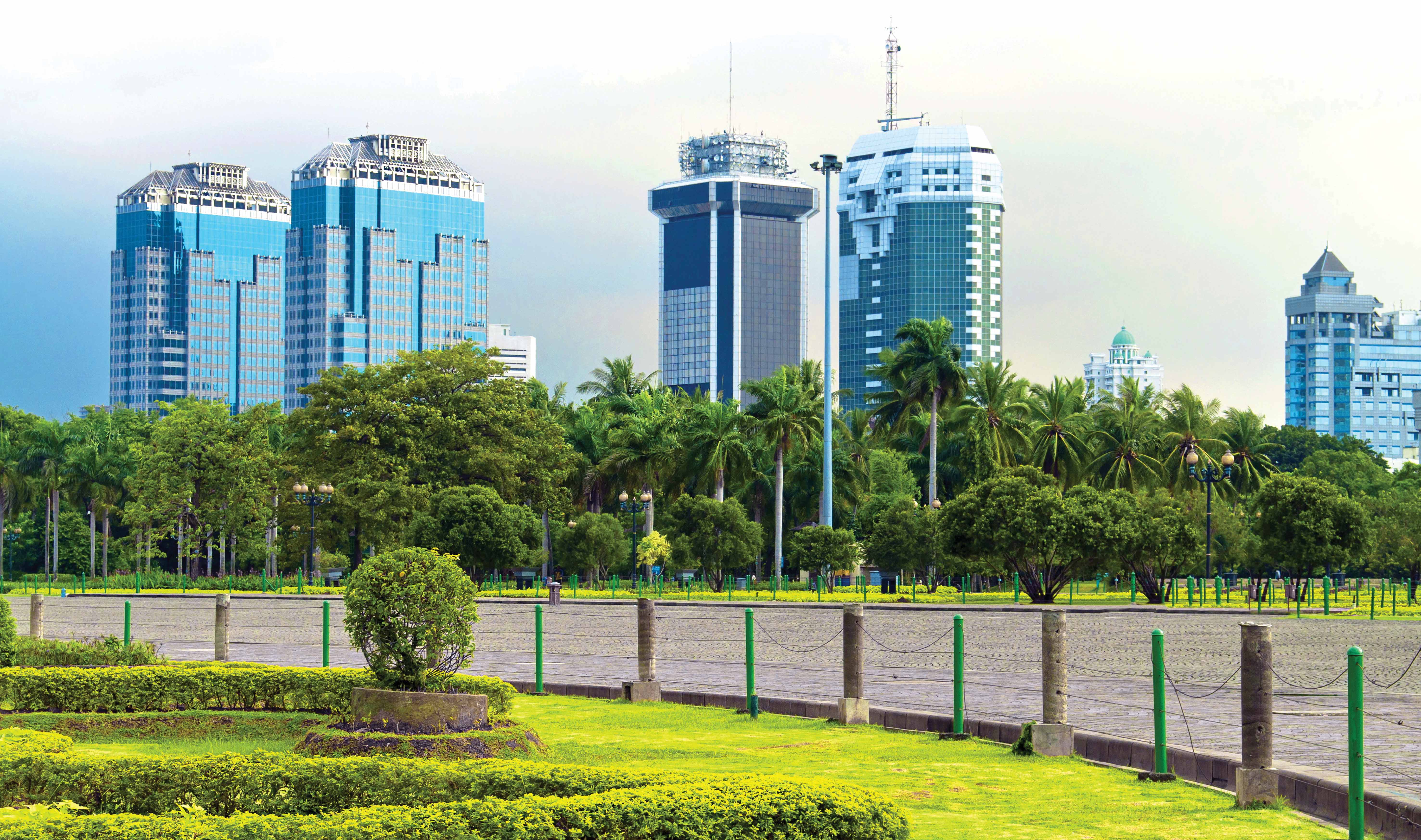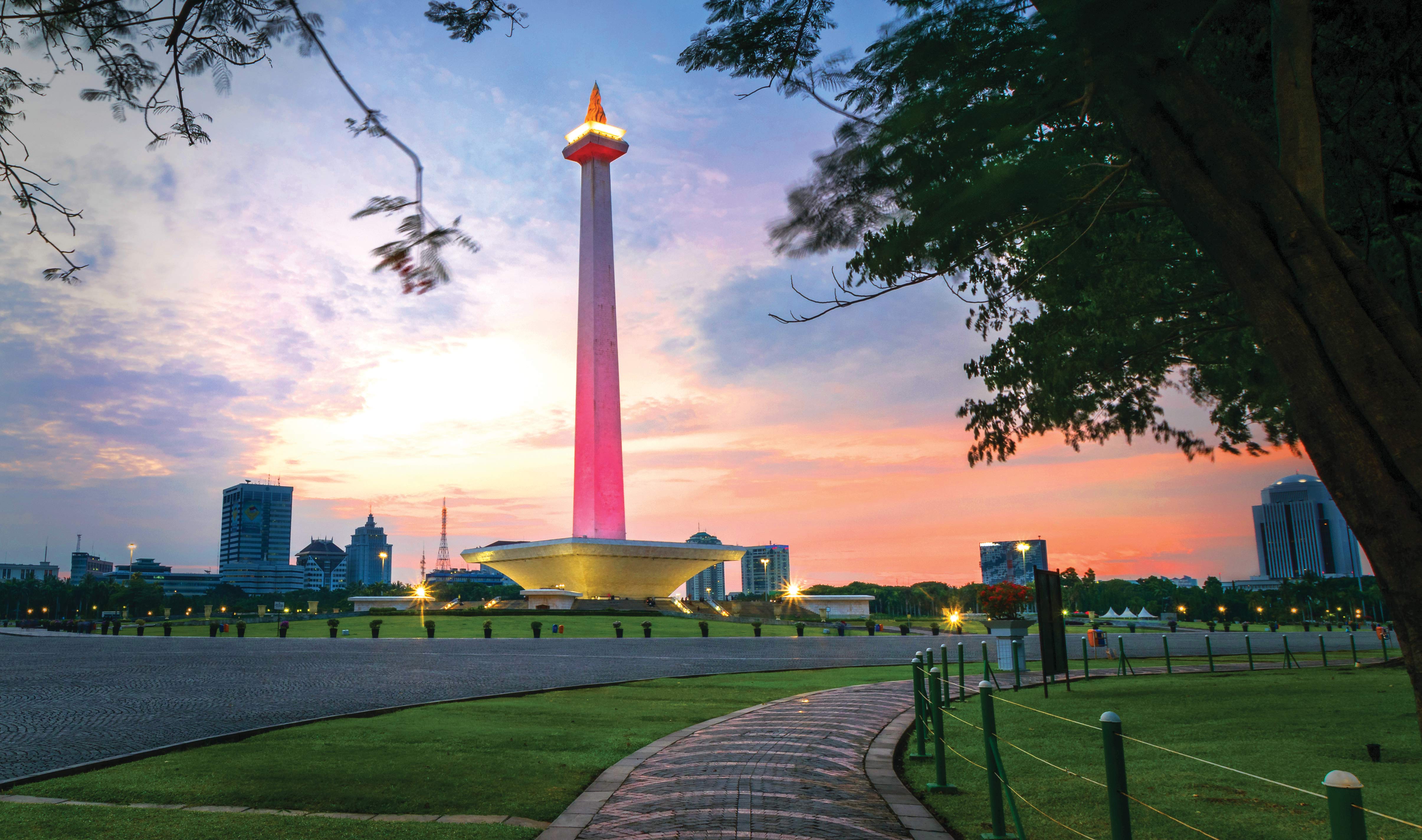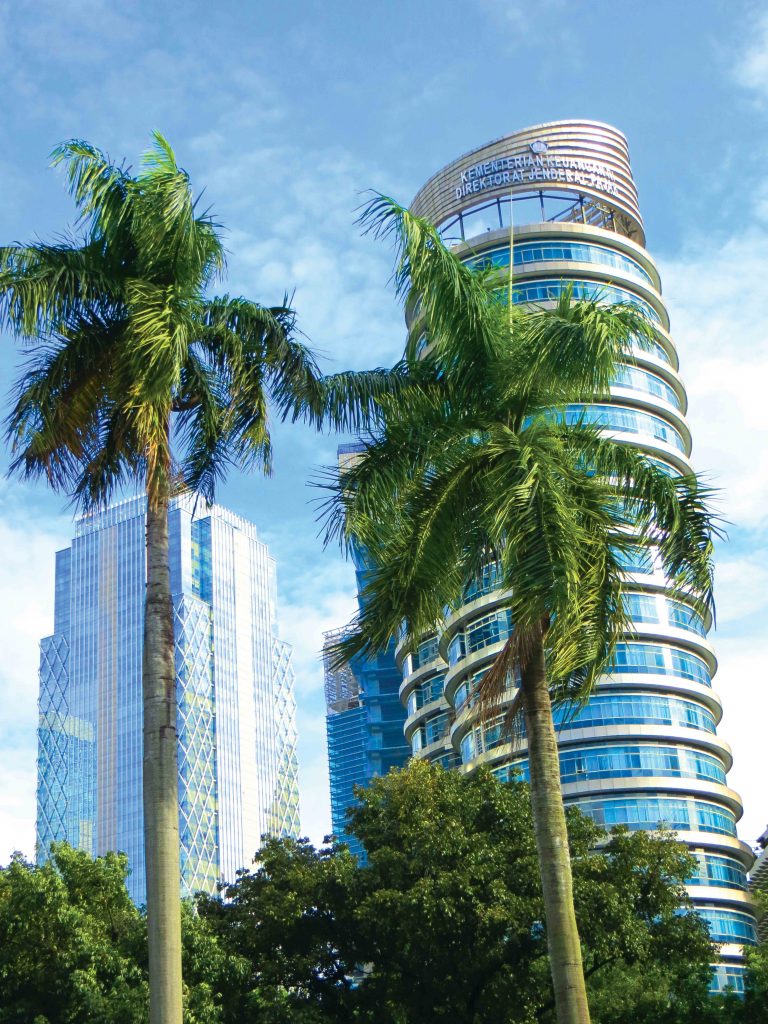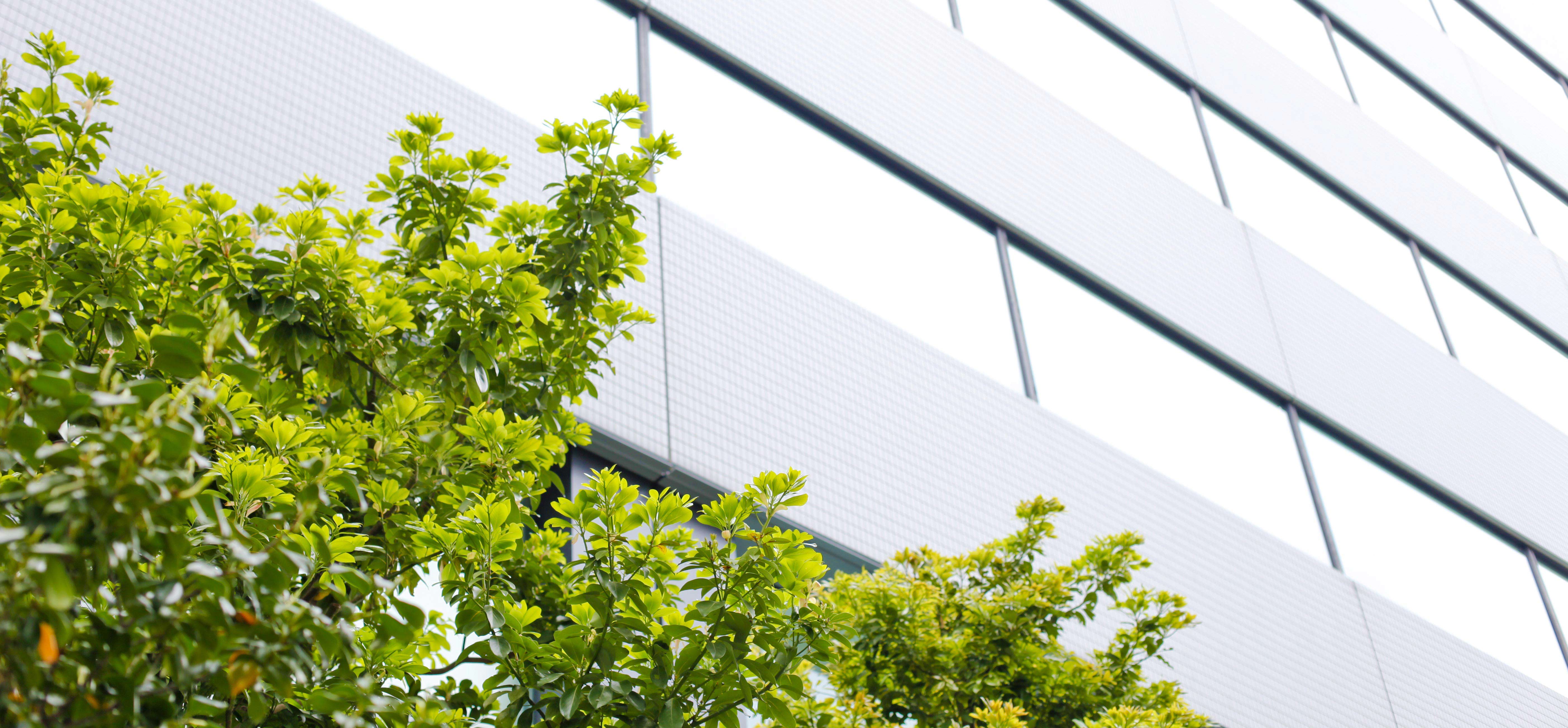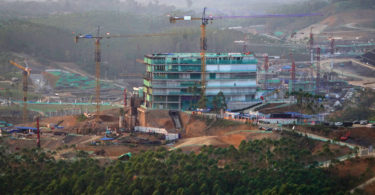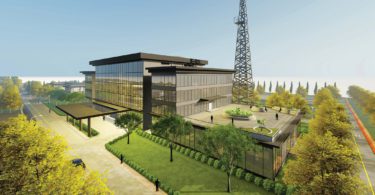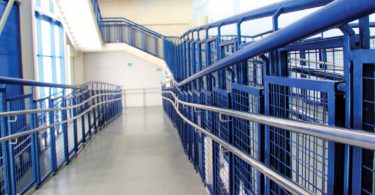The Jakarta Provincial Government has recently signed the Jakarta 30:30 Commitment, an effort aimed at reducing emissions up to 30 per cent by the year 2030. This commitment is a follow-up to the DKI Jakarta Governor Regulation No. 38/2012 on Green Building, which is also the first regulation of its kind issued by the provincial government in Indonesia and the Asia-Pacific in general. In this article, Construction+ Indonesia talks to three renowned figures who are also keen advoca tes of Green building in Indonesia, especially in Jakarta. They are Sigit Kusumawijaya (SK), Ignesjz Kemalawarta (IK) and Sibarani Sofian (SS).
How informed are you about the Jakarta 30:30 Commitment and the regulation of Green buildings?
SK: Regarding the details of the commitment, as an architect I am aware of the regulation, but have not paid much attention as it is non-binding. At first, I thought that this Commitment was not a binding regulation so I did not think too much about it. However, I was involved in the formulation of the DKI Jakarta Governor Regulation No. 38/2012 on Green Building.
I believe this regulation has not been socialised as it should be. The regulation has not been heeded by all architects because of its limited circulation. But I believe most Indonesian architects have already understood the concept of a Green building. Suffice to say, the commitment made by the Jakarta administration is a novel scheme that not many architects here are aware of. The government should socialise it more and educate us about it.
SS: This commitment was signed by the DKI Jakarta Provincial Government in 2016 at the same time as the inauguration of Rumah Susun (low-cost apartment) Daan Mogot. It is an attempt at reducing carbon emissions through the implementation of Green buildings.
IK: DKI Jakarta is the first province to implement the Green building regulations. The Indonesian government has targeted to reduce carbon emissions of up to 26 per cent nationally by the year 2030. The number should be assigned to each sector, such as manufacturers, forests, transportations, buildings and others. It should also be assigned to every part of the country according to their characteristics, and should become the benchmark of the reduction of carbon emissions in each area. This has been a step forward by the Jakarta administration in its effort to reduce carbon emissions, and it has also been stated in the Grand Design of Jakarta Green Building. I fully support the DKI Jakarta administration’s strategic steps, which were taken to ensure that the 30:30 target can be reached by making Green building as the first option, because the city does not have any forests or existing open green areas, as they have all been replaced by concrete jungles and brick towers.
How important is the application of Green building concept in Jakarta, and Indonesia in general?
SK: Actually, whether there are regulations of Green building or not, the concept of Green building should become a lifestyle or a choice made by the people so that they can live a healthier life. We should not implement the Green building concept only because of the regulations. Architects do not only design buildings, their work should also be connected to the lives of the people. In this case, architects should have the initiative to implement the concept of a healthy building, which do not have to solely follow the Green building concept on a large scale in order to satisfy the points stated in the Green building certification. Here, the concept of a healthy building includes emissions, lighting, air circulation, sanitation and vegetation. It is from this position that architects should move towards the points stated in the green building certification.
Architects have an important role in educating their clients about the concept of a healthy building. It can’t be denied that in this area they are placed in a dilemma considering that in the attempt to create a building, architects as planners stand between contractors as executors and clients as the deciding factor. Here, the role of architects becomes extremely significant, especially in giving explanation to the clients about the importance of heeding the building regulations issued by the government, as these regulations must have been thoroughly scrutinised by the government before they were issued.
SS: It is very important and should be done, especially because Indonesia has stated its commitment to reduce carbon emissions as stated in the Doha Amendment to the Kyoto Protocol in 2012. Jakarta is one of the cities with the highest carbon emissions in Indonesia, and one of the contributing factors for carbon emissions in urban areas is the existence of buildings. Therefore, the targeted reduction of carbon emissions through the implementation of Green building regulations in Jakarta is greatly needed.
IK: The implementation of Green buildings in Jakarta and Indonesia is greatly important. The fact is that buildings contribute to about 40 per cent of the global greenhouse gas emissions, and based on the data from Global Insight, the national projection of energy use in buildings is recorded at 40 per cent. We are faced with some facts today that did not happen in the past decades, such as global warming that is caused by the rapid escalation of carbon emissions—a direct result of the advancement of the industry world; the increase of energy needs that is not in proportion to the limited availability of energy resources and the rise of electricity bills; the escalating water needs versus the limited amount of water available as a result of the rise in population; as well as the sick building syndrome, which is an unhealthy phenomenon that may be caused by factors such as the air inside a building being dirtier than the air outside.
The implementation of the Green building concept is one of the excellent solutions that have to be done right now in as many occasions as possible in order to contribute to the fight in eliminating the four conditions in an effective way. This is because a Green building is a building whereby the construction process, from the start of construction to the operational stage, is able to reduce the use of natural resources in terms of materials, electricity and water. In addition, the building can also reduce its negative impact towards the environment, such as wastage, so that it can be a healthier place to live for human beings. With the application of Green building concept, from construction process and operationally, it is hoped that the greenhouse gas (GRK) can be reduced to around 20 to 40 per cent from that of a conventional building.
Just as important is that more and more people are intentionally applying the Green building concept, especially with the offer of incentives for those who build Green buildings, as evident in several countries like Singapore, Malaysia, Vietnam, among others. This movement will develop rapidly with the emergence of building owners who think forward, supporting regulations and a market that favours Green buildings. The incentives for constructing Green buildings include the reduction of building permit (IMB) or land and building tax (PBB) for owners.
How does this policy on Green building change the face of a city?
SK: It is not easy to turn a city into a Green city, especially Jakarta. For instance, to turn Jakarta into a liveable city, it needs 30 per cent of Open Green Spaces (RTH) from its total area. In fact, at the moment only 9 per cent of the city can be considered as RTH, which is far from ideal. One of the difficulties in achieving the ideal number is the scarcity of land in large cities such as Jakarta. Therefore, despite the signing of the commitment, an extremely hard effort is still needed to achieve the ideal number. The application of the Green building concept will help reach the objective. It is true that the Green building concept will not add to the amount of RTH, but if the concept is applied on a larger scale, then a great change is likely to happen.
The concept of urban farming that I have introduced does not tick any of the points in the Green building certification, but in the long term, the aim of the urban farming concept is food independence. With the presence of food independence in an area, carbon footprint can be reduced and emissions can be cut down. Urban farming can be applied from a family scale to larger ones, such as office buildings. When applied on a larger scale, the movement can also reduce carbon emissions and help foster food resilience in the area.
SS: Obviously, this will become an attractive initiative that can improve the image of a city. In addition to finding more environmentally friendly physical features of Green buildings—such as site landscaping, green roofs and vertical greenery— we might see how architects need to work harder in order to reach the target of creating a Green building, for instance, by installing a building skin that can reduce overall thermal transfer value (OTTV). It should also be remembered that the initiative for Green buildings does not always come in tangible forms. Cost-saving efforts done through the change of systems in buildings, such as lighting, water management or mechanical-electrical system, to those that are more environmentally friendly are just as vital.
IK: The face of a city cannot be altered through the implementation of Green building concept as it will not be able to redesign the existing layout. This implementation is geared more towards buildings that are in the early stages of construction, for instance the design stage, which can be adjusted to heed the Green building concept. On the other hand, if this implementation is imposed on existing buildings, maximum efforts are needed for the maintenance of the buildings by limiting the use of resources. With a large number of Green buildings, it is expected that building performance will go up, in the sense that they are maintained using the concept of low-energy, water efficient and low carbon. They should also make use of environmentally friendly materials and become healthy buildings. Users should also implement the Green concepts in their daily activities.
Economically, how much profit can be gained from this commitment?
SK: The application of Green building concept and its technology is an investment, especially when conducted in the early stages of construction. It is true that in the beginning the cost to make a Green building might seem steep, but in the long term, in terms of maintenance, the cost will be cheaper and more efficient. For instance, take a look at a building with enough openings that will reduce the use of electricity for lighting or air-conditioning. This means emissions can also be reduced. In the design phase, architects should not sacrifice the concept of a healthy building for aesthetic reasons.
SS: For the long term, the economic value of a Green building can be felt in the reduction of a building’s operations and maintenance (O&M). The problem is that in the beginning, the Green building initiative will be imposed with the additional CAPEX (2 to 5 per cent) in the construction cost. That means developers have to overcome quite a large entry barrier, with a benefit that is still elusive, especially if the O&M is burdened to the tenant to pay. However, with the passing of time, better regulations and requirements, higher cost of energy and other resources (rupiah/kwh or rupiah/liter), as well as more demands for Green building certifications (GBCI, LEED and the like) to ensure that best practices will make an impact in the application of the Green building concept.
IK: If the reduction of carbon emissions is done following the commitment, the following will happen: we will see the correct way of handling wastage—meaning that the carbon emissions that are created in the process will be reduced; more energy-efficient buildings will be built compared to conventional ones—a result of energy reduction in the use of household gases, higher use of public transportation compared to private vehicles, as well as less use of electricity in the buildings; and more green spaces in the city will absorb carbon emissions.
Quantitatively, another benefit obtained from energy reduction of building gases, transportation and electricity include lower costs. Qualitatively, benefits gained from carbon reduction include cleaner and fresher air, a role in combating global warming and potentially decreasing its impact.
What is the ideal city layout to achieve the objectives of the Jakarta 30:30 Commitment?
SK: Problems faced by large cities such as Jakarta are very complex. One of them is the problem of inadequate open green spaces. The city of Jakarta is actually in the act of smartening up its image by adding more green spaces and starting the construction of child-friendly integrated public spaces (RPTRA) that require more green areas. In addition, the presence of mass transportation plays an effective supporting role in reducing carbon emissions. At the moment, Jakarta has TransJakarta buses and soon MRT trains will be available. All modes of mass transportation have to be integrated in order to better support the activities of the people.
With more buildings applying the Green building concept and the addition of open green spaces, as well as more organised pedestrian lanes and parks, the capital city is bound to become a much more comfortable place to live. At the moment, Jakarta is placed at number 143 in the survey done by Mercer Quality of Living, lower than Manila (ranked 135); Bangkok (131); Kuala Lumpur (86); and quite further down from Singapore (25). Suffice to say, it is still far from being an ideal city. In order to fare better, Jakarta still needs sprucing up. For instance, the construction of RPTRAs are still far from ideal— ideally one neighbourhood should have two RPTRAs. Realising an ideal city should not only be done through the Green building certification, but there are also other things at play, such as mass transportation and open green spaces.
SS: The scope of the DKI Jakarta Governor Regulation No. 38/2012 is still limited to buildings on a particular plot of land. The commitment should continue at the city level or outside the plot of land where efficiency and large reduction of carbon emissions are more likely to happen. Examples include pedestrian-friendly block or pavement design in the transportation sector, and water infiltration and reforestation at a district level through water-sensitive urban design. The Green District or Neighborhood Commitment that is planned by GBCI should be supported and brought to the same level as the DKI Jakarta Governor Regulation No. 38/2012. We can’t forget that the initiative at the smart city level can be combined with the initiative in these green areas so that there can be a joint effort to achieve better results.
IK: I think the Green city reference from the Ministry of Public Works and Housing (PUPR) can be applied. It is also known as the eight attributes of a Green city, namely:
- Green Planning and Design: The efforts to improve the quality of city planning and design that adopt the principles of a sustainable city, including the Urban Spatial Planning (RDTR), Building and Development Planning Program (RTBL), as well as the master plan of the area that also considers the planning or conservation of Open Green Spaces (RTH).
- Green Community: The active role of the people or communities, as well as private institutions, in developing a Green city.
- Green Open Space: The quality and quantity improvement of RTH inside a city following the characteristics of the city or regency, with a proportion of 30 per cent of RTH from the total area.
- Green Building and Energy Savings: The efforts to develop cost-efficient and environmentally friendly buildings through the application of Green building principles.
- Green Energy: The efficient and environmentally friendly use of non-renewable natural resources by using alternative energy resources.
- Green Transportation: The efforts to solve the problems of transportation system, especially traffic jams and air pollution by developing sustainable transportation means with the principles of reducing the negative impacts towards the environment.
- Green Water: The efficient use of water resources for human survival by maximising water infiltration, reducing surface water run-off and ensuring efficient use of water.
- Green Waste: The efforts to manage waste and rubbish in order to create zero waste by applying the concept of 3R: Reduce, Reuse and Recycle.
These attributes have been used as the foundation for DKI Jakarta to develop the city. In addition, I believe the DKI Jakarta Provincial Government has already prepared the tools in order to accomplish Jakarta 30:30. Based on the information that I have received, Jakarta has prepared the Jakarta Green Building Grand Design Plan to realise the Jakarta 30:30 Commitment as the Center of Excellence in Green Buildings. Included in the plan are the strategies planned by the city to realise the commitment.
 SIGIT KUSUMAWIJAYA, B.ARCH., MSC., IAI
SIGIT KUSUMAWIJAYA, B.ARCH., MSC., IAI
PRINCIPAL ARCHITECT OF SIGIT KUSUMAWIJAYA ARCHITECT & URBAN DESIGNER
Sigit was born in Jakarta, Indonesia on 14 November 1981. He has finished several design projects, writings and research, especially in architecture, urban planning, environment, graphic design, cinematography and music project, also social community movement. He graduated as Bachelor of Architecture degree from University of Indonesia and received Master of Science degree from Delft University of Technology (TU Delft), The Netherlands, majoring Urbanism. He established his own company named Sigit Kusumawijaya Architect & Urban Designer and also teaches at University of Indonesia as a guest lecturer.
SIBARANI SOFIAN, MUDD, B.ARCH, LEED AP
FOUNDER & DIRECTOR OF URBAN+
Sibarani is Founder and Director of URBAN+ practice that he started in 2017 after working for 10+ years in AECOM, executing Indonesian strategic projects such as Ancol Eco Park, Bandung Technopolis, Gading Serpong New Township master plan, Garuda Wisnu Kencana Park, Bumi Serpong Damai Grand CBD, Surya Cipta Industrial Park, Mandalika Resort Master Plan, etc. He is well connected with all the leadership of top developers in Indonesia, such as Ciputra, Summarecon, Lippo, etc. as well as playing advisory role for several cities as well as government department, such as Ministry of Public Works, Transportation and Spatial Planning.
 IR. IGNESJZ KEMALAWARTA, MBA
IR. IGNESJZ KEMALAWARTA, MBA
DIRECTOR OF CORPORATE GOVERNANCE AND SUSTAINABLE DEVELOPMENT OF SINAR MAS LAND
After he graduated as Bachelor in Architecture from Bandung Institute of Technology in 1981, he worked at PT Pembangunan Jaya (1982-1988). He continued to complete his MBA from Newport University, USA in 1994 and worked as a Director in PT Bintaro Serpong Damai Tollroad (1994- 2003). Currently, he is a Director of Corporate Governance and Sustainable Development Sinar Mas Land, Vice Chairman of Real Estate Indonesia and serves as a Technical Expert for Private and Government Sector at Green Building Council Indonesia.

 Malaysia
Malaysia Hong Kong
Hong Kong Singapore
Singapore Tiếng Việt
Tiếng Việt ประเทศไทย
ประเทศไทย

